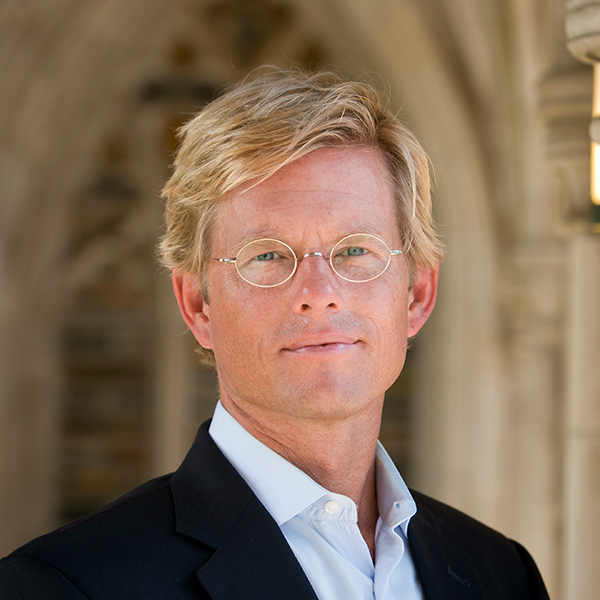One of the troubling legacies left by the modern world is the overemphasis upon specialization and expertise. This may sound strange, of course, since without specialization and expertise many good things would remain missing from our lives: diagnoses and treatments of illness and disease, translations of ancient texts that exist only in dead languages, bridges and buildings that stand the test of time, and virtually countless other matters that enrich human life.
The trouble, however, is that we have become so specialized and developed such a culture of experts -- witness the multitude of such people on any news outlet -- that we have largely forgotten how to think in wholes, or how to see the connections between all the various strands that make up our lives.
For Christian leaders, making the connections is not an option.
Perhaps the most basic Christian confession of all is that Jesus is Lord. By this the early Christians did not mean that Jesus was one Lord among many but that he was the only one, the “Lord of all,” as Peter puts it in Acts (10:36). Practically speaking, this means that all areas of life are related to him as their Lord. To become Christ-shaped leaders, therefore, is to learn how to see all things in relation to Christ.
As the latter part of the book of Acts tells it, St. Paul, for example, saw the connection between Roman law and the Christian mission -- an unlikely pairing at the beginning, to say the least. Paul was able to work inside the legal traditions of the Romans in order to present his case before the highest officials in the east (with the hope of moving on to the emperor himself).
In this way, he was able to testify to Christ in a setting to which he would otherwise never have gained admittance. Rather than simply accepting or rejecting Roman legal authority on its own terms, that is, Paul discerned how it was connected to Christ as its Lord: as a vehicle that could carry the apostle across the Mediterranean, establishing further connections to Christian communities and providing the chance for Paul to speak about Christ in unlikely places.
Or again, in 1 Corinthians Paul is at pains to show the connection between Christ and food.
Food, says Paul, is not inherently either good or evil, but it is not for this reason removed from what matters for Christian life. To the contrary: eating is a matter of Christian witness.
You cannot, Paul says to the formerly pagan Corinthians, continue going to the feasts at the temples to the gods. Such a practice challenges publicly Christ’s universal lordship by displaying your ongoing allegiance to other gods (1 Corinthians 8 and 10).
Moreover, when there are those that are hungry among you, ignoring them not only shames the rich; it flouts the most basic realities of the Lord’s Supper (1 Corinthians 11).
To see food in relation to Christ is to see that how we eat is a matter of Christian witness and our understanding and reception of grace. Drawing the connection between the need of the hungry and the celebration of the Eucharist is integral to Christian life.
Admittedly, discerning the connections between things that are not normally held together is rarely easy, and even where our Christian vision is clear on one thing, it may need serious clarification on another.
In his book on community organizing titled “Blessed Are the Organized,” for example, Jeffrey Stout tells of a Roman Catholic priest whose congregation was focused on the issue of abortion but had little interest in engaging other issues of wide social import. As Stout notes, in Catholic teaching contesting abortion is a way to work for Pope John Paul II’s call to establish a “culture of life.”
The priest therefore naturally agreed with his people that a culture of life could never be established while unborn children remained vulnerable in the face of political games. Yet until he was able to draw the connections for his congregation, they could not understand how a culture of life required an equally robust commitment to join the struggle against squalid poverty, violence and political domination.
Stout observes that what was needed was the ability to extend John Paul II’s call much more broadly; in short, the priest needed to help make the connections between all these things because of their relation to the one Lord of all: they are all part of the culture of life.
Christian institutional leaders regularly need to make connections conceptually, metaphorically and institutionally. This effort creates an ecology of interdependent institutions, able in partnership to do what each is unable to accomplish alone. Of the many ways in which we can learn to see the connections, three seem central.
First, as prosaic as it may seem, we need to read Scripture regularly with special attention to the astonishing array of things that we hold apart but that seem to go together for the early Christians: religion and politics, public and private, economics and community, body and soul, even death and life.
A prolonged exposure to the unity of life as found in the New Testament will go a long way toward disabling our tendencies to divide and compartmentalize.
Second, we need to develop a guiding image that has connection at its core, and then teach this image as a way to imagine the world’s connections. L. Gregory Jones has recently written of “crossing borders,” and in an earlier reflection I emphasized the importance of networks.
But whether we think in terms of crossing borders or networks -- or of the Internet or a thriving city, say -- doesn’t matter as much as getting clear on the importance of what the image conveys: that things are irreducibly connected, that we must actively seek out their connection, and that to miss the connection is to misunderstand the world in which we live.
Getting hold of a good image alone won’t do enough work, of course. We also need to develop deeply ingrained habits of learning, but absent a guiding image, it is hard to see the telos of such habits. The image helps us to see where our habits are aimed.
Third, we need to find concrete examples of Christian leaders and communities who both see and live the connections of the world in relation to Christ’s redeeming lordship.
In Houston’s Fifth Ward, for example, Pleasant Hill Baptist Church exemplifies what it means to live the connections between active, traditional ministries and the fuller context of life in Houston.
Realizing, like the author of the Epistle of James, that it is difficult to call people to transformation when they have no place to live, Pleasant Hill began a community development corporation 20 years ago that has now built hundreds of houses.
Of course, children have to be educated, and people need somewhere to go when not at home. Is this the work of the church? In the Fifth Ward of Houston, it is.
Pleasant Hill has initiated a tutoring program and supported the launch of a community center, preschool programs and a charter school. In 2008, at a Duke Center for Reconciliation retreat with leaders of reconciliation efforts in the U.S. and Africa, pastor Harvey Clemons Jr. saw the connection between the work of his church and the undocumented immigrants that were moving into communities adjacent to the Fifth Ward.
Leviticus 19:34 suddenly sprang to life -- “the stranger who dwells among you shall be to you as one born among you, and you shall love him as yourself; for you were strangers in the land of Egypt: I am the Lord your God” (NKJV) -- and Pleasant Hill began working with leading sociologists at Rice University to highlight immigration issues in Houston and beyond. In short, Pleasant Hill Baptist Church is a living example of how to discern and actively make the connections that Christ’s universal lordship requires.
In an age where we take it for granted that the doctor looks at health, the engineer at buildings, the scholar at texts, the pastor at souls and so on, we have a hard time making the connections.
But Christian leaders cannot afford to rest content with expertise and the compartmentalizing of life. Christ does not relate only to the soul or to this or that aspect of the world but draws all parts of life to himself for healing and redemption.
The failure to see the connections between the various parts of life is a failure, therefore, to discern the work of Christ --in terms of both what is already going on and what yet needs to be done.

















